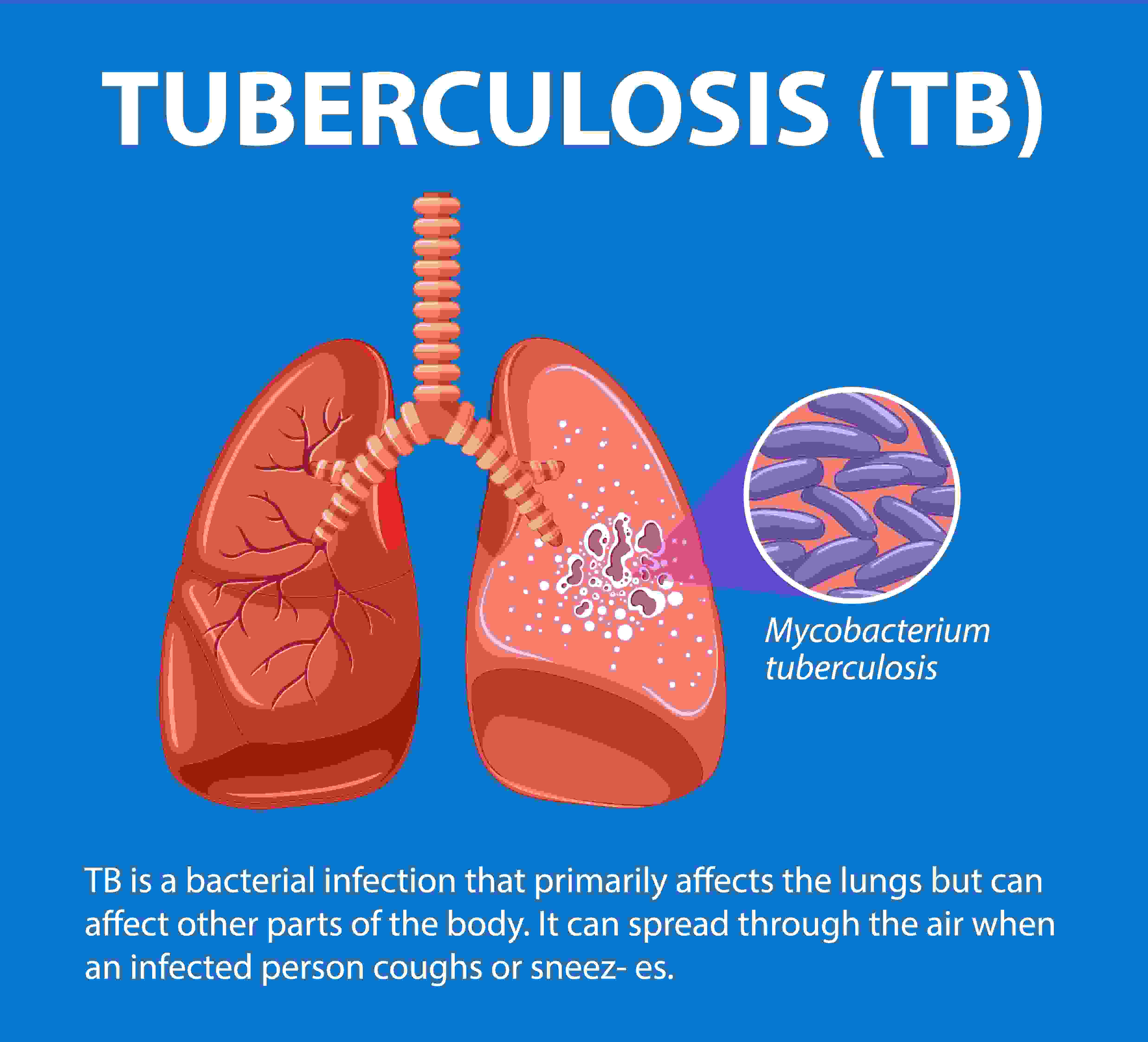Tuberculosis (TB)
Understanding Tuberculosis
Tuberculosis (TB) is a potentially serious infectious disease that mainly affects the lungs but can also impact other parts of the body. It is caused by the bacterium *Mycobacterium tuberculosis*. TB spreads through airborne droplets released when an infected person coughs or sneezes.
Symptoms of Tuberculosis:
Common symptoms of TB include persistent cough, chest pain, coughing up blood, fever, night sweats, weight loss, and fatigue. TB may remain latent in some individuals without causing symptoms but can become active if the immune system weakens.
Types of TB:
TB is classified into Pulmonary TB (affecting the lungs) and Extrapulmonary TB (affecting other organs like kidneys, spine, or brain). Pulmonary TB is the most common and contagious form.
Treatment of Tuberculosis:
Treatment for TB involves a combination of antibiotics taken over a period of 6 to 9 months. The most common medications include isoniazid, rifampin, ethambutol, and pyrazinamide. It is crucial to complete the full course of treatment to prevent drug resistance.
Prevention of Tuberculosis:
Prevention strategies include vaccination with the BCG vaccine, improving ventilation in living spaces, and ensuring early diagnosis and treatment of infected individuals. Those in close contact with TB patients may require preventive medication to reduce the risk of developing active TB.
In conclusion, early diagnosis, consistent treatment, and preventive measures are essential for managing and reducing the spread of Tuberculosis. Awareness campaigns and public health initiatives play a vital role in controlling this global health concern.


